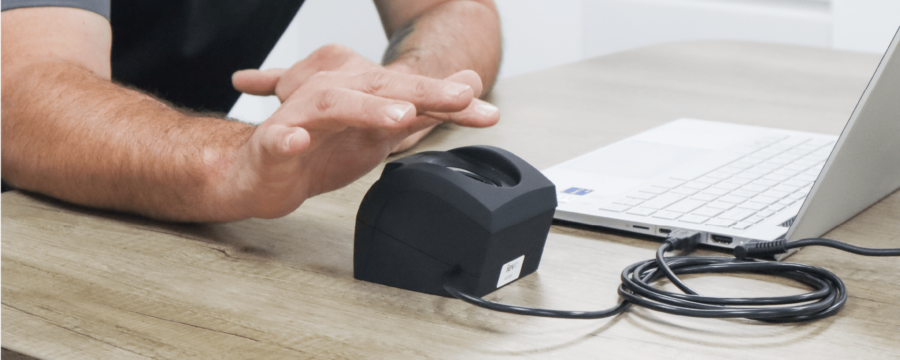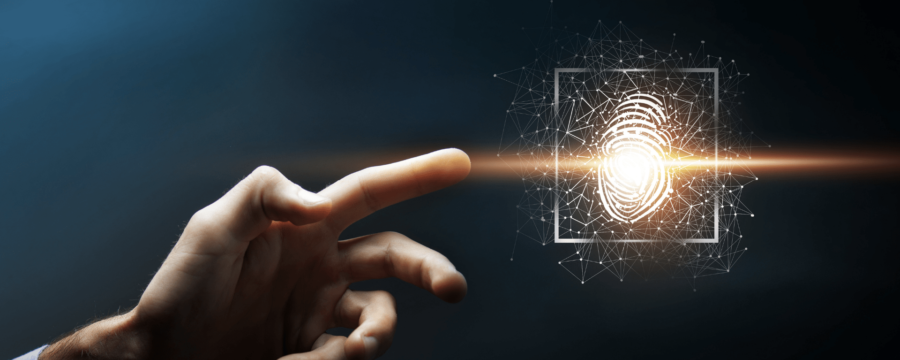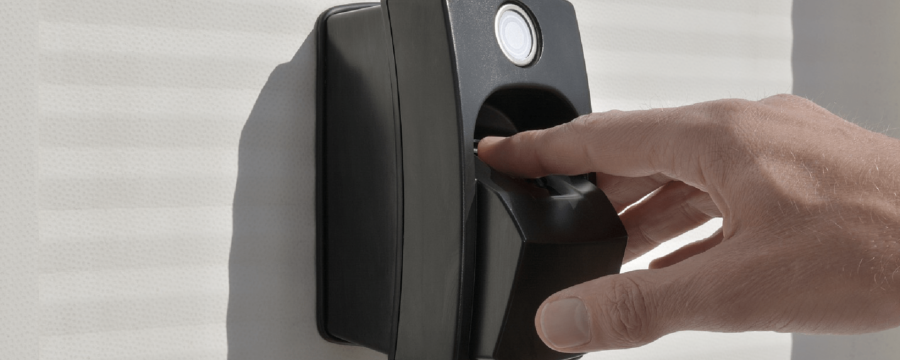What do FAR and FRR mean? Are they important in biometric access control systems?
The success of a biometric access control system relies on two key factors: security and reliability. These factors are intrinsically linked to one another. Often, a change in the level of one of them results in an opposite change in the level of the other. Why does this happen?
There are two essential metrics that analyse security and reliability in biometrics. It is vital that you understand FAR (False Acceptance Rate) and FRR (False Rejection Rate) and how they are interdependent.
What is biometric access control?
Biometric access control is a method of authenticating a person’s identity with their physiological characteristics for the purposes of physical security in a building. Traditional access control systems may use swipe cards, keyring tags, or PIN codes to verify identity. These methods all rely on something you have or something you know. Conversely, biometric access control utilises factors that are something you are. Fingerprints, iris patterns, facial features, voice patterns, and handprints can be used to confirm that you are exactly who you say you are.

Benefits of biometric access control
Because biometric security uses physiological characteristics of your body to identify you, it offers an inherently higher level of security. A person can forget a PIN code, lose a keyring tag, or have a swipe card stolen. The same is not true of their fingerprints, facial features, or voice. For adult humans, these are unchanging features except in rare and extreme circumstances. As a result, it’s also very convenient for the user. You don’t need to remember to bring anything to gain access to a secure building – just turn up.
What is False Acceptance Rate (FAR)?
A False Acceptance in biometric access control refers to cases where the system grants access to an unauthorised person. Even though that person is not registered in the system, they presented their biometric data and it was accepted. The False Acceptance Rate is usually shown as a percentage. It shows the proportion of all unauthorised attempts to enter that result in a False Acceptance.
Why is False Acceptance Rate important?
The False Acceptance Rate of a biometric access control system is critical for security. The lower the FAR, the lower the chances of an unauthorised person gaining access. Therefore, a lower FAR indicates a higher level of security. After all, what is the point of an access control system in the first place if anybody can present a credential and gain entry?

What is False Rejection Rate (FRR)?
A False Rejection in biometric access control occurs when an authorised person is not recognised as such by the system. Even though they are correctly registered, the system rejects them and does not allow them access to the secure area. The False Rejection Rate is the percentage of legitimate attempts to gain access that are incorrectly rejected by the system.
Why is False Rejection Rate important?
The False Rejection Rate in a biometric access control system is all about reliability and convenience. If genuinely authorised individuals can’t gain access to secure areas, it results in frustration and wasted time. The lower the FRR, the lower the chances of a registered person being rejected by the system. Therefore, a lower FRR indicates a more reliable and user-friendly system.
Balancing security and convenience
The FAR and FRR of a biometric access control system are closely interlinked. Changes to one of the rates almost always mean changes in the opposite direction to the other.
Threshold settings and the impact on FAR and FRR
Biometric security systems have threshold settings for acceptance. Due to the variability of the physiological characteristics they are analysing, biometric systems need some slack. The threshold refers to the level of matching between the presented credential (e.g. a fingerprint) and the saved template in the system’s database. If the threshold is set at 100%, then the presented finger must match exactly 100% of the saved template in order to be accepted. However, due to things like the angle of presentation, variations in temperature, and residue or debris on the finger, it’s quite unlikely that 100% matching is realistic.

The balancing act of FAR and FRR
In an ideal world, both FAR and FRR would be 0%. The lower both are, the better. But is that realistic?
Most organisations reduce the acceptance threshold a little bit to allow for those varying factors. This is where the balancing act comes in. A 100% matching threshold offers the highest possible level of security. If even one minutiae datapoint in the presented fingerprint doesn’t match the template, that person is not gaining entry. The False Acceptance Rate should be zero in that case. However, that is likely to mean that the False Rejection Rate is quite high. People are likely to be rejected even though they’re authorised, leading to annoyance and frustration for users.
To improve the convenience and experience for users, the acceptance threshold can be reduced to require less than 100% matching. Authorised users will be rejected less frequently, giving you a lower FRR. However, there may be a trade-off with security levels. In this case, you may have to accept that an FAR of more than 0% is likely. Most organisations find a middle ground between the two, balancing security and convenience.
Other factors that influence FAR and FRR
There are a wide range of factors that can impact the accuracy and reliability of a biometric access system. The quality of the originally captured data, the performance level of the biometric sensor, and the biometric modality selected (e.g. fingerprint, face, voice) can all play a role. Some modalities are more susceptible to variation due to temperature change and weather factors. The characteristics of the users may also play a role – some systems may be more or less accurate for different demographic groups, depending on age, ethnicity, and gender. The matching threshold is not the only factor that can influence FAR and FRR in practice.
For more information about biometric access control, book a meeting with our in-house expert:
